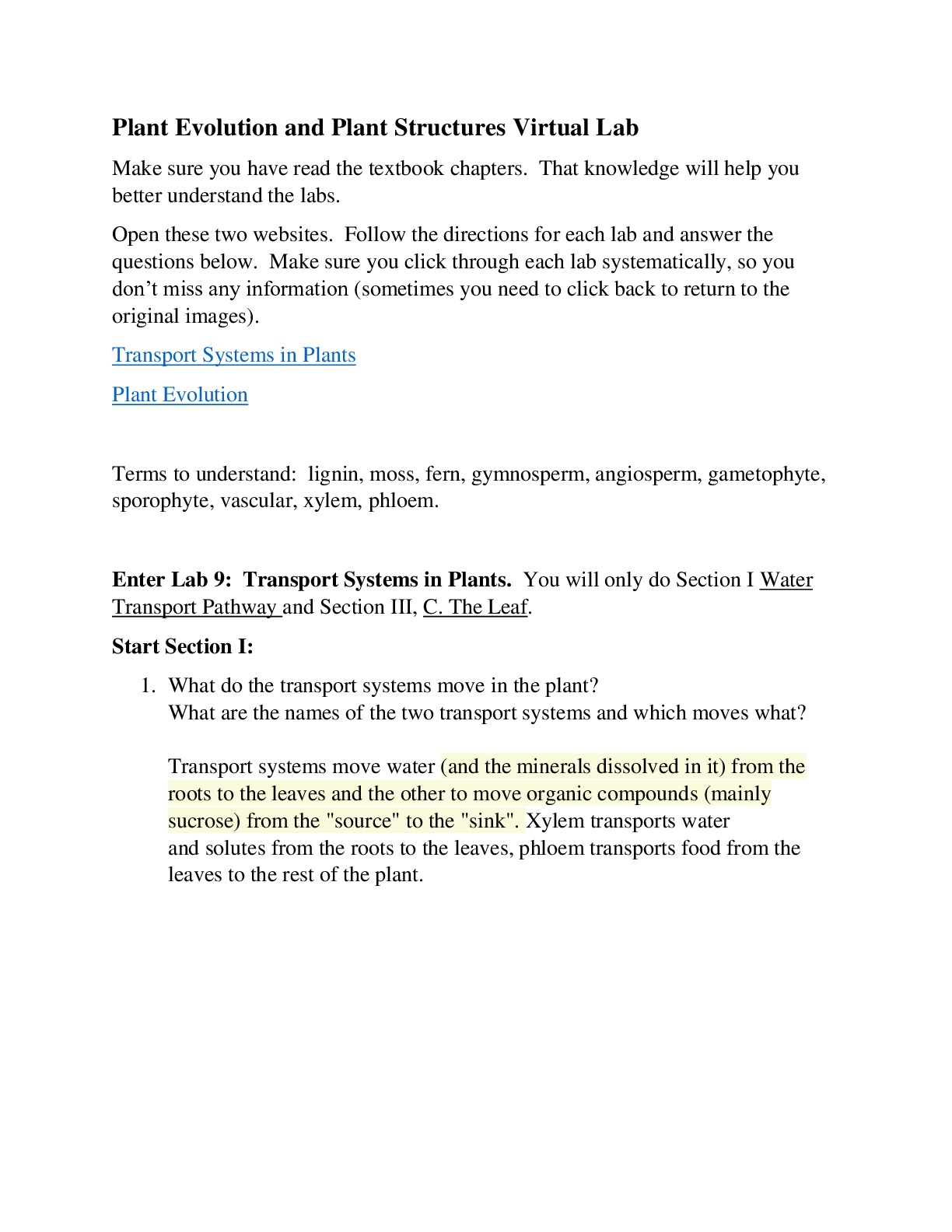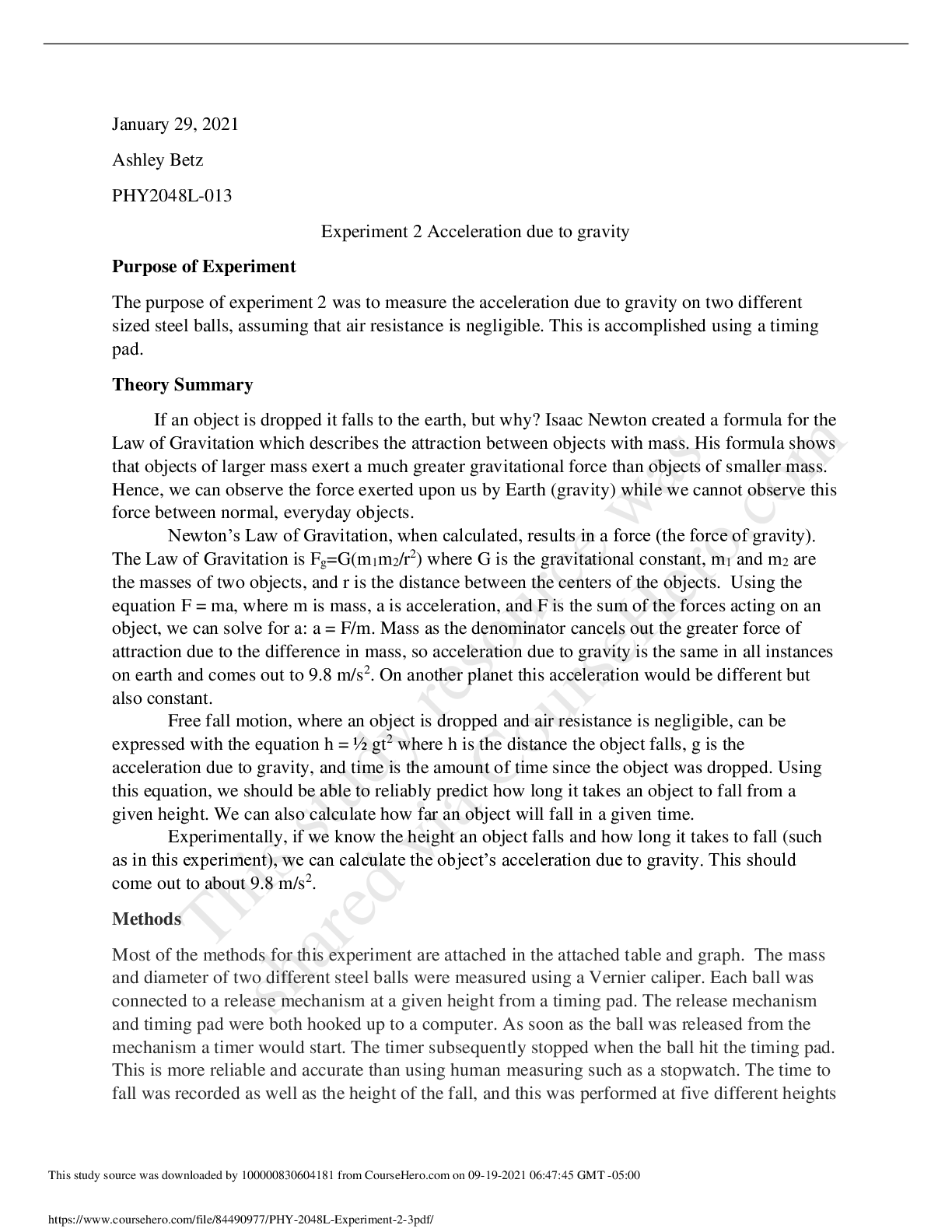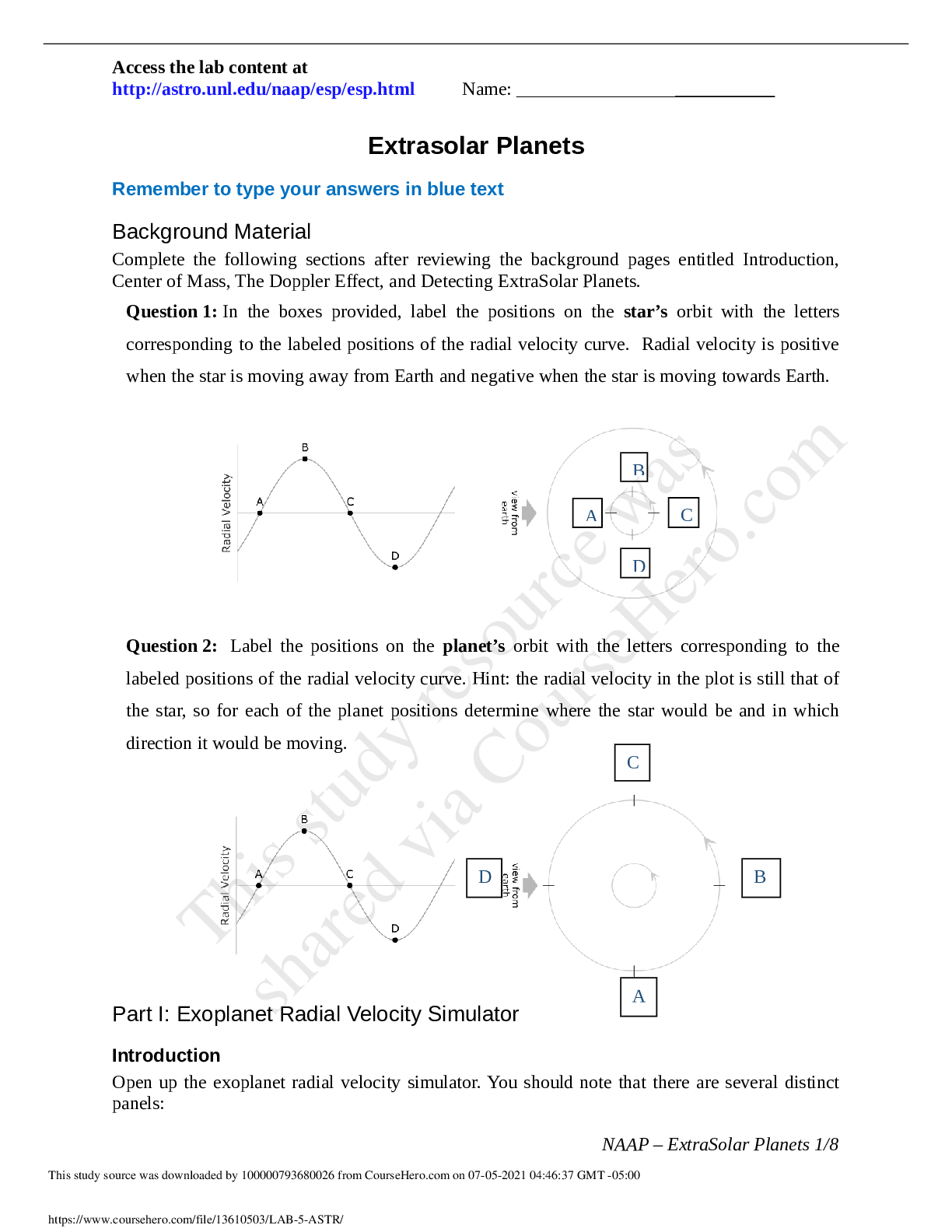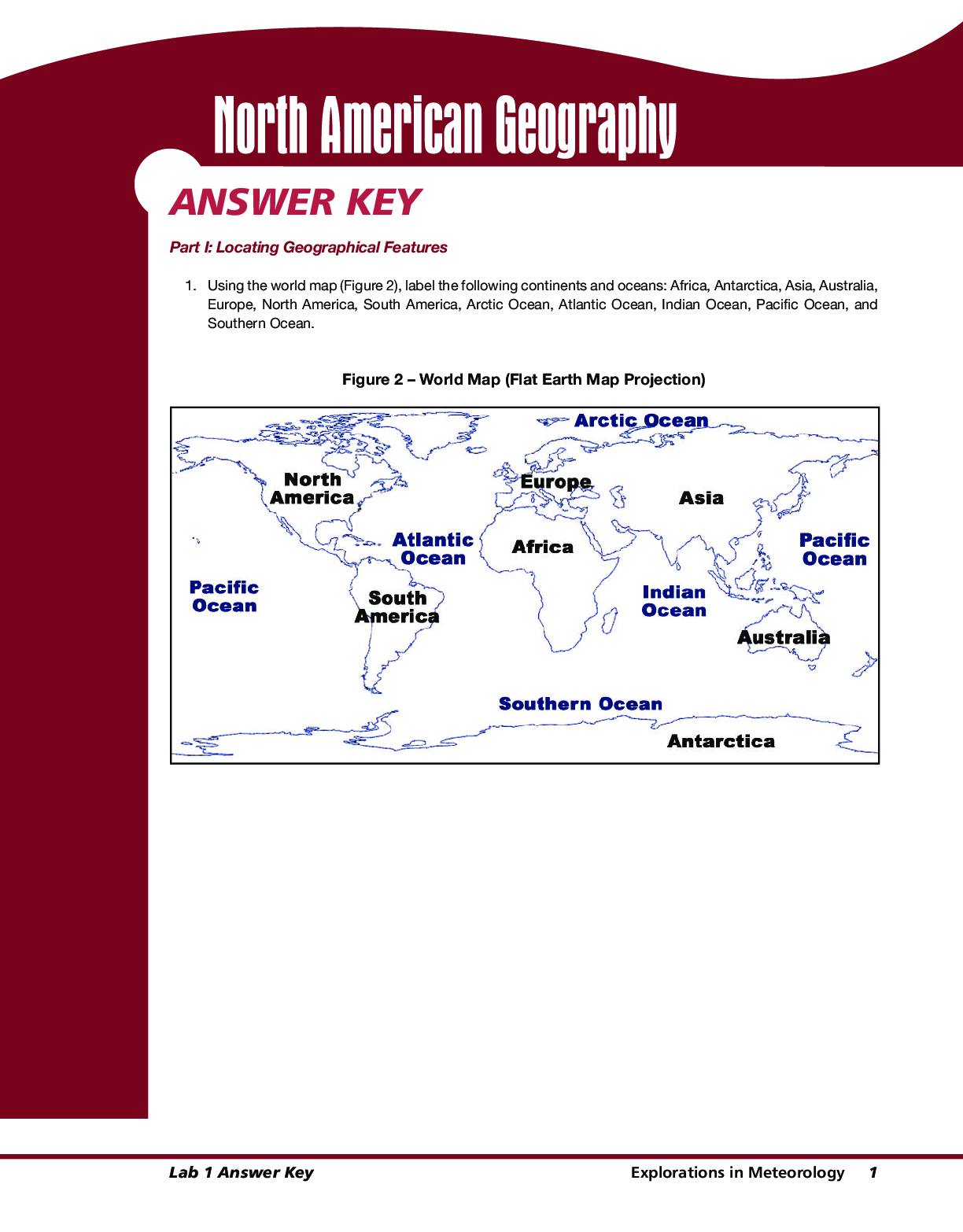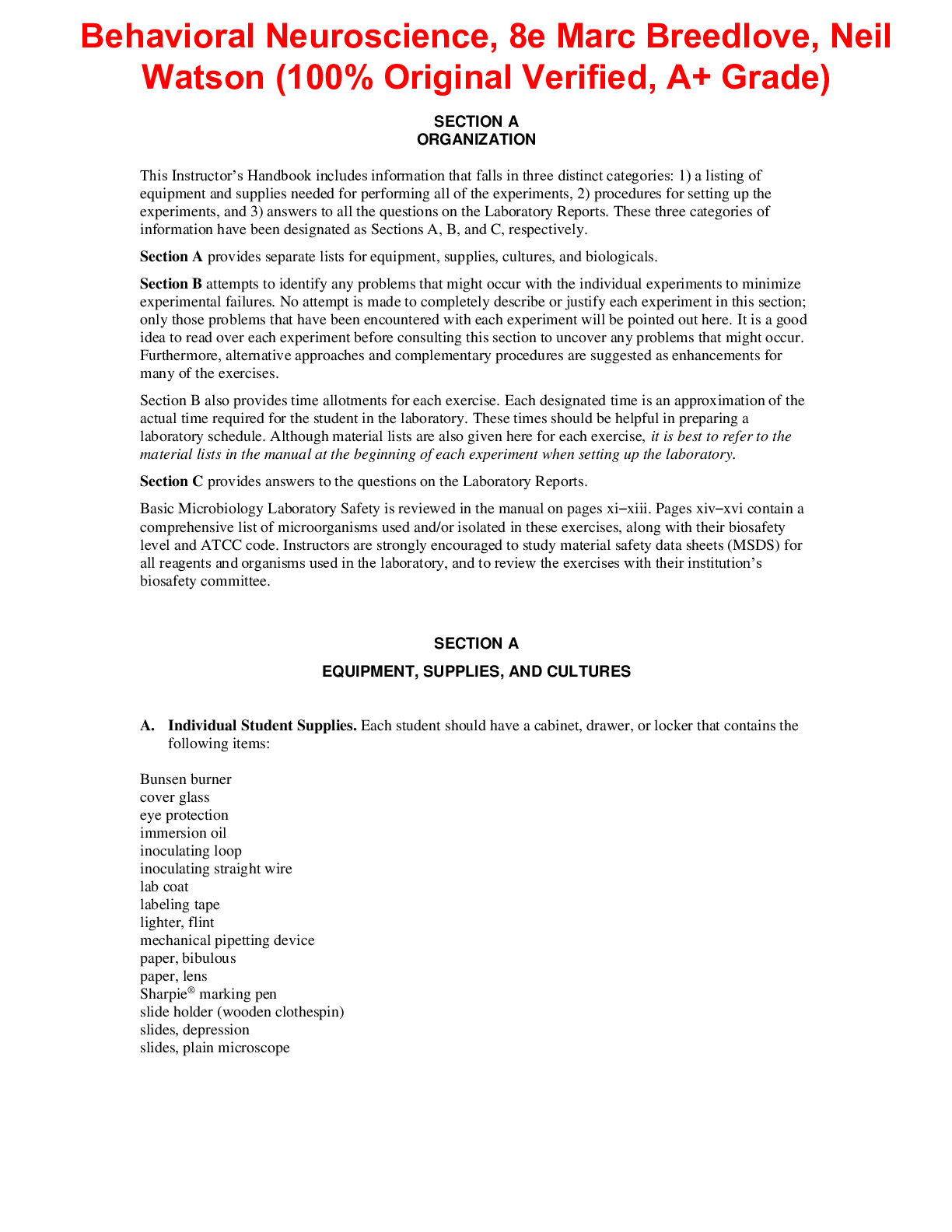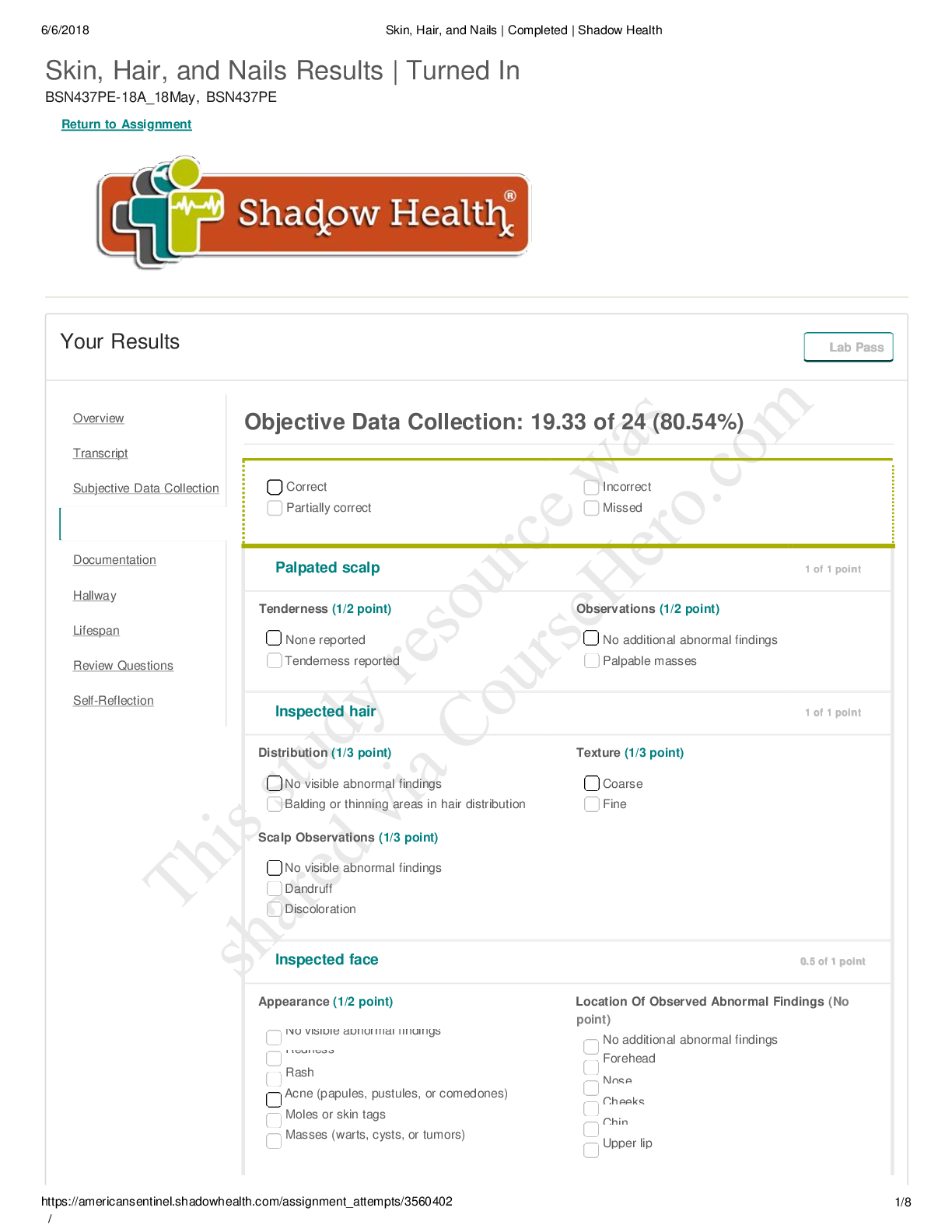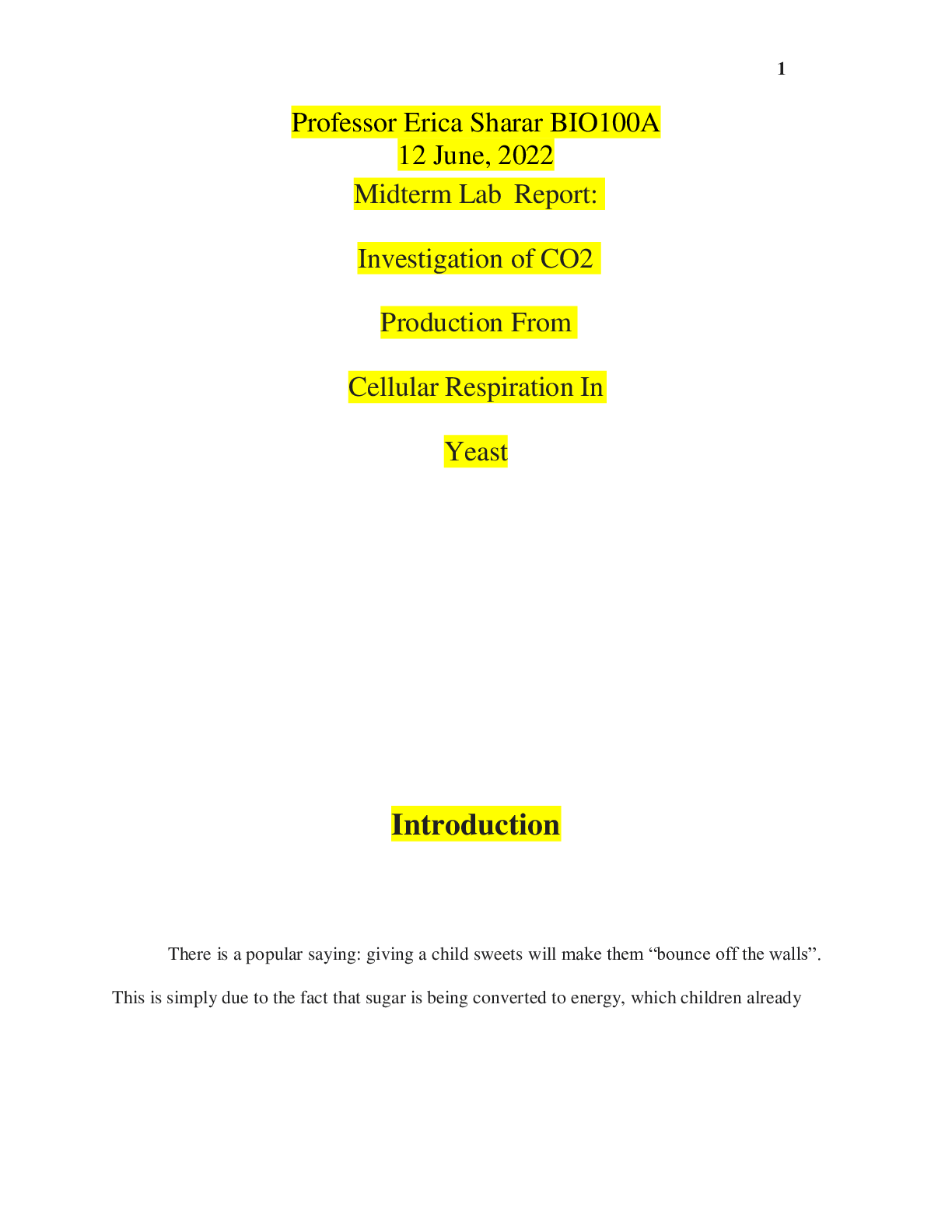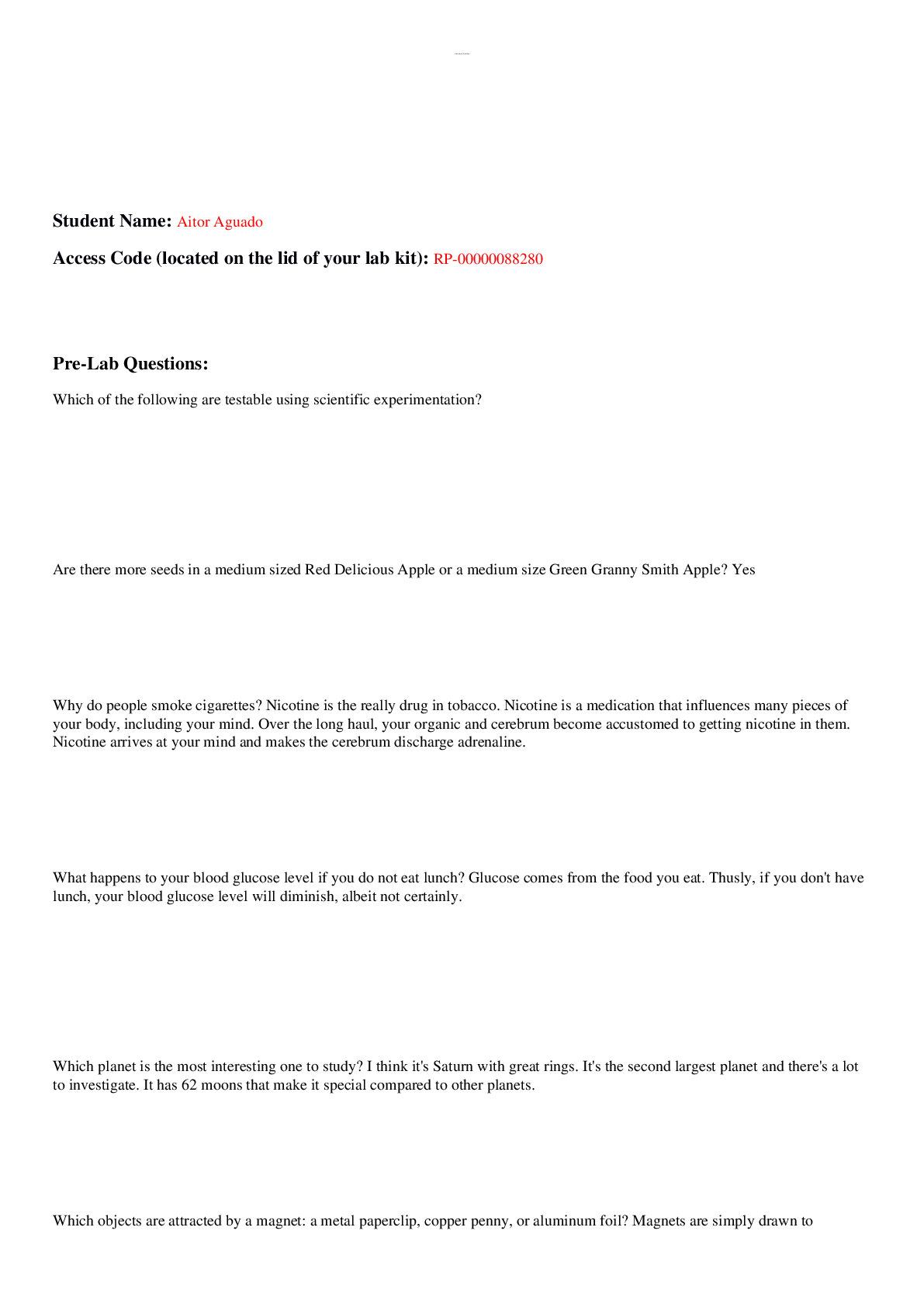Physics > Lab Experiment > Florida Atlantic University PHY 2049L Experiment 1 (All)
Florida Atlantic University PHY 2049L Experiment 1
Document Content and Description Below
Purpose: Map electric equipotential lines and electric field lines for two dimensional charge configurations Theory: The magnitude of electrostatic force between two point charges can be determ ... ined using Coulomb’s law: F=k|q1 q2| r 2 where r is the distance between charges and k is the Coulomb’s constant (k=9.0x109 Nm2/C2). The directions of the forces the two charges exert each other are always along the line joining the two point charges and like charges repel and unlike charges repel. The magnitude electric field is defined as the electrical force per unit charge, i.e., E=F/q(N/C), here q is a test point charge. In the case of the electric field associated with a single source charge Q, the magnitude of the electric field a distance r away from the source charge is the following equation: E= F q =k|q| r 2 . Electric field is a vector quantity which is specified by both its magnitude and direction The electric field of a point charge always points away from a positive charge but towards a negative charge. Figure 1 (a) shows the electric field vectors from a positive source charge. By drawing lines through the points in the direction of the field vectors, we form the electric field lines (Fig. 1b and c), which give a graphical representation of the electric field. It can be shown that the electric potential at a distance r form the source charge Q is V=k q r . The electric potential is a scalar quantity, which is specified by its magnitude only. Electric potential can be either positive or negative depends on the sign of the source charge Q The electrical potential of two or more point charges is simply the algebraic sum of the potentials due to each point charge separately V=k∑ i=1 N Qi r i where N is the total number of point charges. Since a free charge is an electric field by the action of the electric force, we say that work is done by the field on moving a charge from one point to another. To move a positive charge from B to A would require work supplied by an external force to move the charge against the electric field. [Show More]
Last updated: 3 years ago
Preview 1 out of 7 pages

Buy this document to get the full access instantly
Instant Download Access after purchase
Buy NowInstant download
We Accept:

Reviews( 0 )
$9.00
Can't find what you want? Try our AI powered Search
Document information
Connected school, study & course
About the document
Uploaded On
Jul 04, 2021
Number of pages
7
Written in
All
Additional information
This document has been written for:
Uploaded
Jul 04, 2021
Downloads
0
Views
143


